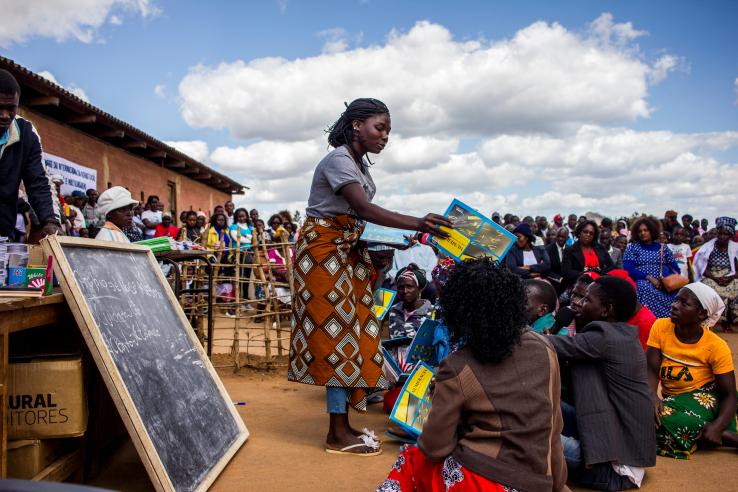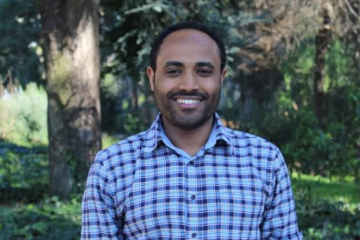
Affiliate Spotlight: Selim Gulesci on addressing gender-based violence in Mozambican schools

In May 2025, J-PAL Africa invited LinkedIn readers to submit questions about a recent randomized evaluation on preventing gender-based violence in Mozambican schools, coauthored by J-PAL affiliated researcher Selim Gulesci. The study evaluated a program implemented through the public education system that trained teachers and supported students to better recognize, respond to, and report gender-based violence.
Selim Gulesci is an associate professor of economics at Trinity College Dublin. His research investigates the intersection of labor and development economics, with a particular focus on entrepreneurship and the role of gender norms in limiting women’s productivity. He has conducted randomized evaluations in South Asia, South America, and sub-Saharan Africa, on topics such as graduation programs supporting people living in extreme poverty, access to childcare, and vocational and soft skills training for young women. He earned his PhD in Economics from the London School of Economics and serves as a Scientific Advisor for J-PAL Africa’s Girls’ Education and Empowerment Portfolio.
Below, Selim responds to five questions from readers, sharing reflections on the research findings, implementation dynamics, and opportunities for adaptation in other contexts.
Interested in more research insights like these? Subscribe to our Gender and Education newsletter to receive the latest research findings, event announcements, and resources directly in your inbox.
Questions were edited for style and clarity.
In schools where both boys and girls participated in the student sessions, what did you observe about how the content was delivered or received? Did this format influence how students engaged or how the sessions were facilitated?
It is fair to say that we documented some differences in engagement between mixed-gender and single-gender sessions. Our qualitative evidence from teachers and classroom observations suggested that certain topics were more difficult to discuss when boys and girls participated in a joint session. However, when we looked at quantitative indicators of engagement—such as the number of sentences written on the board during discussion sessions—we did not find systematic differences.
Did you observe any differences in how the program was delivered—or how students responded—based on whether men or women teachers conducted the training sessions?
The vast majority of our Gender Focal Points—teachers appointed by the Ministry of Education and trained to respond to gender-based violence in schools—were women teachers. Therefore, in this study, we are unable to assess potential differences in delivery or student response based on the gender of the facilitator.
What was the duration of the pilot, and how were schools selected for participation? Do you see opportunities to replicate this model in other settings, such as Nigeria?
Absolutely! We see strong potential for replicating this model in other settings, with appropriate adaptations to both content and delivery. In Mozambique, for instance, theater and role-playing were particularly well-received by students. In other contexts, different activities may resonate better. Regarding the mode of delivery, the program relies heavily on Gender Focal Points as pre-existing figures within schools tasked with addressing gender-related issues. In contexts where such roles do not exist, we would need to explore suitable alternatives for delivering the program.
Some readers have raised concerns that interpreting the results as “proactive behavior among girls” could imply placing the burden of response on potential survivors. How do you see this interpretation, and how do you balance it with the need to deter potential perpetrators?
We see our results as capturing both aspects: deterring potential perpetrators and empowering girls. The empirical evidence showed that violence decreased across the board when Gender Focal Points were trained and delivered the intervention to students. However, for these reductions in violence to translate into increased school enrollment of girls, the data indicated that girls also needed to be trained.
Our analysis of the underlying mechanisms suggested that empowering girls to report violence formally—via the Gender Focal Points—activated protective mechanisms that helped remove barriers to education. While we understand concerns that this could be interpreted as placing responsibility on potential survivors, we see the training as offering tools and institutional pathways for girls to assert their agency, if and when they choose to. Ultimately, it is crucial that any reporting mechanism respects the autonomy and choices of survivors.
How would you adapt the manual and training for private schools?
Adaptation would depend heavily on the infrastructure and personnel of the private schools in question. It would depend on how the private schools differ from the government schools, and this is likely to vary across contexts.
Stay connected and collaborate!
Our team is eager to collaborate, share evidence-driven insights, and support you in integrating rigorous research into your programs. If you're working on girls' education and empowerment initiatives in Benin, Ghana, Nigeria, Liberia, or across sub-Saharan Africa, reach out to us at [email protected] to explore collaboration opportunities.


